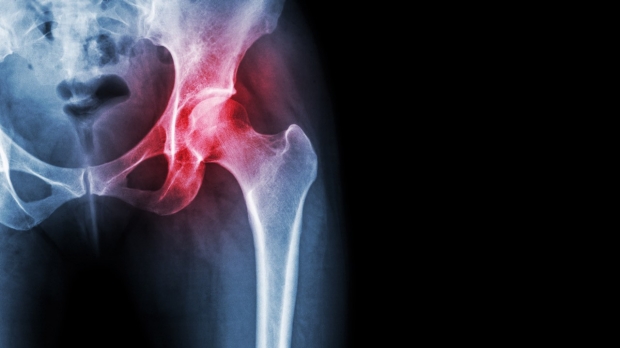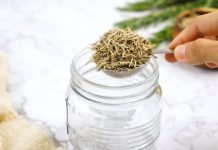Stanford Medicine researchers have discovered how genetic and molecular changes in aging skeletal stem cells may contribute to poor fracture healing, osteoporosis and various blood disorders, as well as general inflammation and aging — or “inflammaging.”
The research was done in mice, but the findings likely apply to humans.
The team has begun testing a technique to reinvigorate old skeletal stem cells with an anti-aging gel.
“Skeletal stem cells give rise to bone, cartilage and special cells that provide a niche or nursery for blood and immune stem cells to develop,” said Charles Chan, PhD, assistant professor of surgery. “So if aged skeletal stem cells are not performing well, they can contribute to a wide variety of the disorders that we find in older people.” Slow or incomplete bone healing is a leading cause of morbidity and mortality in aging adults, he added.
Although scientists have long understood the mechanisms behind osteoporosis and the poor healing of fractures, Chan and his team have, for the first time, traced the origins of those two mechanisms back to the action of skeletal stem cells.
A paper describing the research was published in Nature on Aug. 11. Chan and Michael Longaker, MD, the Dean P. and Louise Mitchell Professor in the School of Medicine, are co-senior authors. Chan and Longaker are members of the Institute for Stem Cell Biology and Regenerative Medicine. Postdoctoral scholar Thomas Ambrosi, PhD; former medical student Owen Marecic, MD; and former postdoctoral scholar Adrian McArdle, MD, PhD, share senior authorship.
Old stem cells and fragile bones
Normally, bones are constantly in flux, with old bone tissue being resorbed and new bone being added to replace it and repair tiny fractures that appear over time. In young, healthy bones, this process is balanced.
The researchers found that the genes expressed by old skeletal stem cells in mice were associated with reduced bone formation and greater bone resorption. This imbalance mimics the conditions that ultimately lead to osteoporosis in humans.
“When bone heals, it develops a callus at the fracture, which is usually full of skeletal stem cells,” Chan said. “But in aged mice, there are far fewer skeletal stem cells at the site of healing.” Skeletal stem cells from mice that were24 months old, an age comparable to 75-year-old humans, were also less capable of forming bone in a laboratory dish compared with young skeletal stem cells, the team found.
Further research showed that part of the problem in fracture healing might be found in the connection between skeletal stem cells and hematopoietic stem cells, which give rise to blood and immune cells. Skeletal stem cells produce not only bone and cartilage, but also special cells that create the niche for developing blood and immune stem cells in the bone marrow.
The research revealed that the act of exposing hematopoietic stem cells to old skeletal stem cells skewed the development of those hematopoietic stem cells, Ambrosi said. After exposure, the hematopoietic stem cells produced more cells that express inflammatory factors and absorb bone, he said.
“This echoes what we see in the clinic, where we might put a pin in an aged patient’s broken bone and find that the fracture just doesn’t heal,” Chan said.
Inflammaging
By altering the normal development of blood and immune stem cells, old bone stem cells may accelerate aging and disease in many other parts of the body as well. Inflammation is recognized as an important overall driver of aging, and a strong linkage between the two has led to the term “inflammaging.” If old skeletal stem cells are driving the creation of more inflammatory cells, they may ultimately be responsible for the increase in inflammation and the aging of tissues throughout the body, Chan said.
Blood stem cells that deviate from normal development also have been associated with the development of disorders, such as atherosclerosis, so aging skeletal stem cells could play a role in the onset of many other diseases, Chan said. “We really don’t know where the influence of aged skeletal stem cells ends,” he said. “They could be a primary driver of aging and disease generally.”
The researchers did find reason for hope, however. Genetic analysis revealed that older mice produced too much colony-stimulating factor 1, or Csf1. This molecule is necessary for bone healing, but it must be present in just the right amount — not too much and not too little — to do its job right. They also saw a decrease in the expression of a molecule called BMP2, which is a powerful stimulator of skeletal stem cell activity and is also important for bone healing.
Based on their findings, the group created a special gel, with BMP2 and an antibody that reduces the level of Csf1, to reset the behavior of the old stem cells. When researchers applied the gel to the surface of bone fractures in old mice, they healed like fractures in a control group of young mice.
“We may be able to make aged fracture healing more like youthful fracture healing. It’s very exciting. As our population is aging, the medical burden of aged fractures is also increasing,” Longaker said. “If we can locally treat an aged fracture and stimulate a more robust repair, like it was when the patient was younger, this would have enormous benefits.”
If the technique proves successful in clinical trials, Longaker said, patients could be walking and recovering more rapidly, thus avoiding complications such as a pneumonia or a blood clot in the leg.
The researchers also suspect that rejuvenating old skeletal stem cells could potentially reverse the skewed production of inflammatory immune cells and imbalances in the types of blood cells produced in older people. “We are hopeful that by addressing changes that occur as skeletal stem cells age, we may end up reducing age-related changes and disease throughout the body,” Chan said.








